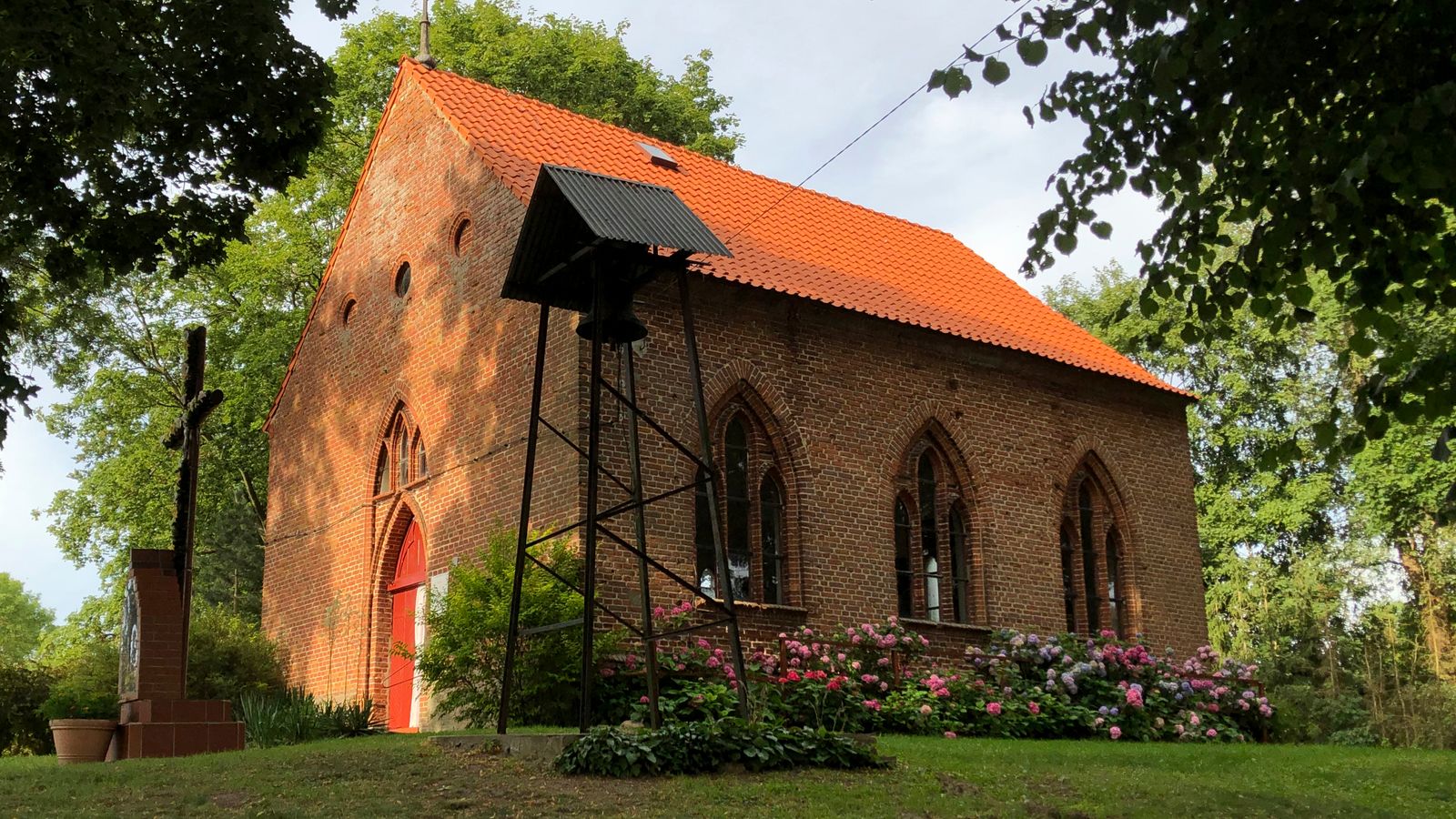A Viking king whose nickname was used for Bluetooth wireless technology could actually be buried in Poland rather than Denmark, researchers have claimed.
According to a chronicle from the Middle Ages, King Harald “Bluetooth” Gormsson of Denmark, who died 1,000 years ago, was buried in Roskilde in Denmark in the late 10th century.
But a Swedish archaeologist and a Polish researcher have recently claimed in separate publications they have pinpointed his most probable burial site as the village of Wiejkowo, in an area of north-western Poland that had ties to the Vikings in Bluetooth’s time.
Marek Kryda, author of the book Viking Poland, told The Associated Press a “pagan mound” he claims to have located beneath Wiejkowo’s 19th-century Roman Catholic church probably holds the king’s remains.
He said geological satellite images available on a Polish government portal reveal a rotund shape under the Church of The Immaculate Conception of the Blessed Virgin Mary that looks like a Viking burial mound.
But Swedish archaeologist Sven Rosborn says Mr Kryda is wrong because Bluetooth, who converted from paganism to Christianity and founded churches in the area, must have been buried in an appropriate grave somewhere in the churchyard.
Bluetooth died in 985, probably in Jomsborg – now believed to be the Polish town of Wolin – which is near Wiejkowo.
Denmark: Girl, 14, dies after part of rollercoaster ride ‘comes off rails’ at theme park
Harry Styles ‘devastated’ and ‘heartbroken’ by deadly Copenhagen shopping centre shooting after cancelling nearby show
Copenhagen shopping mall gunman acted alone and shot victims at random, police say
He was given his nickname because one of his teeth, which had probably gone bad, looked blueish, according to chronicles from the time.
He was one of the last Viking kings to rule over what is now Denmark, northern Germany and parts of Sweden and Norway and spread Christianity throughout his kingdom.
Swedish telecommunications company Ericsson named its Bluetooth wireless technology after the king to reflect how he united much of Scandinavia during his rule. The logo for the technology features the Scandinavian runic letters for the king’s initials, HB.
Mr Rosborn put forward his research in the 2021 book The Viking King’s Golden Treasure and Mr Kryda challenged some of his findings in his own book published this year.
Mr Rosborn, former director of Sweden’s Malmo City Museum, began his quest in 2014 when an 11-year-old girl asked his opinion about a small coin-like object with old-looking text that had been in her family’s possession for decades.
Experts determined the cast gold “Curmsun disc” dated from the 10th century, with a Latin inscription reading: “Harald Gormsson (Curmsun in Latin) king of Danes, Scania, Jomsborg, town Aldinburg.”
Maja Sielski’s family, who moved to Sweden from Poland in 1986, said the disc came from a trove found in 1841 in a tomb beneath the Wiejkowo church, which replaced the medieval chapel.
The Sielski family came into possession of the disc along with the Wiejkowo parish archives, which contained medieval parchment chronicles in Latin, in 1945.
A family member who could read Latin translated some of the chronicles, which dated as far back as the 10th century, into Polish, to find they mention Bluetooth – another fact linking him to the Wiejkowo church.
Mr Kryda said the Curmsun disc is “phenomenal” with its meaningful inscription and said it would be worth it to examine Wiejkowo as Bluetooth’s burial place.
However there are currently no plans for any excavations.






















